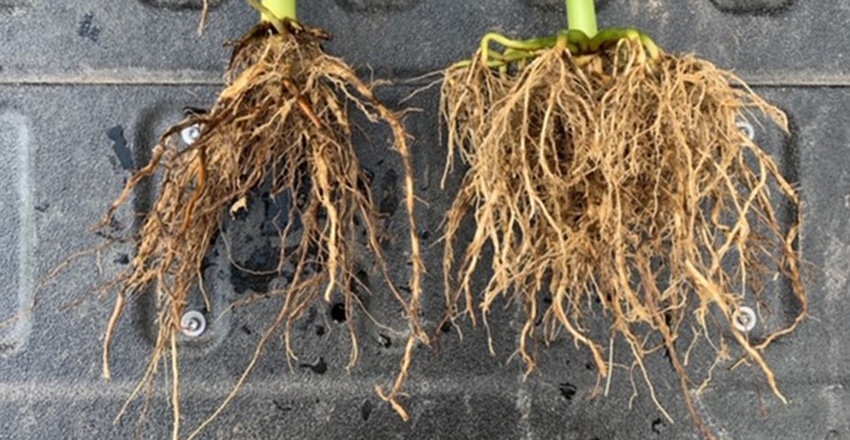
Kyle Quick decided it was important to share what he saw with corn rootworms in 2020 after examining a plot in east-central Indiana recently. He found considerable rootworm feeding in a rotated field, even though it wasn’t to the extent he might expect in western Indiana or other hotbed areas.
“I’m not sounding an alarm by any means,” says Quick, a retail product agronomist for Brevant Seeds, covering east-central and southeast Indiana. Brevant, with a large worldwide footprint, replaced Mycogen as Corteva Agriscience’s primary retail seed brand in the U.S.
“What I am saying is that western corn rootworm, including the variant which can lay eggs in soybeans fields and impact first-year corn, is still here and real in Indiana,” Quick says. “Depending upon where you live, you may want to pay more attention to it than you have in the past few seasons.”
Lodged corn at harvest is often written off as a result of stalk rot or stress related to weather conditions. While this year provided dry weather stress in some locations, and while you can find some stalk rot in most fields in most years, Quick believes that some instances of lodging blamed on those causes are due to rootworm feeding.
“If you’re not using hybrids with below-ground protection and not applying insecticides, there may be more rootworm pressure out there than you think,” he says. The Brevant hybrids that exhibited rootworm feeding on roots in east-central Indiana only had above-ground Bt insect protection.
Rootworms in the future
How you approach rootworm control for 2021 may depend on where you live. “If you farm south of Interstate 70 in Indiana, you should remain vigilant,” Quick says. “Look for signs of rootworm feeding pressure. You can even do it in the fall by digging up roots and looking for feeding scars. It’s not as easy as during the season, but it’s doable.”
However, unless you’re growing corn after corn or you farm in certain pockets in southern Indiana where first-year corn is affected more often, you may not need to invest in below-ground insect protection, unless it’s already part of your plan. That’s true even if you saw a few rootworm beetles flying in soybeans in late summer, Quick says.
“If you farm in the northern half of the state, it’s a different story,” he adds. “You may want to consider hybrids with below-ground insect protection, too, especially in northwest Indiana where the variant has historically been more active.
“Anywhere in the northern half of the state, be suspicious if you saw considerable lodging. Root lodging may actually be due to rootworm feeding earlier in the year and deserves further investigation.”
Pressure may also be higher in areas where more corn after corn was grown for several seasons in the mid-2010s, when corn prices were higher, Quick adds. Rootworm beetle numbers have tended to back off with the move back toward more beans. But rootworms are still here, he concludes.
About the Author(s)
You May Also Like




